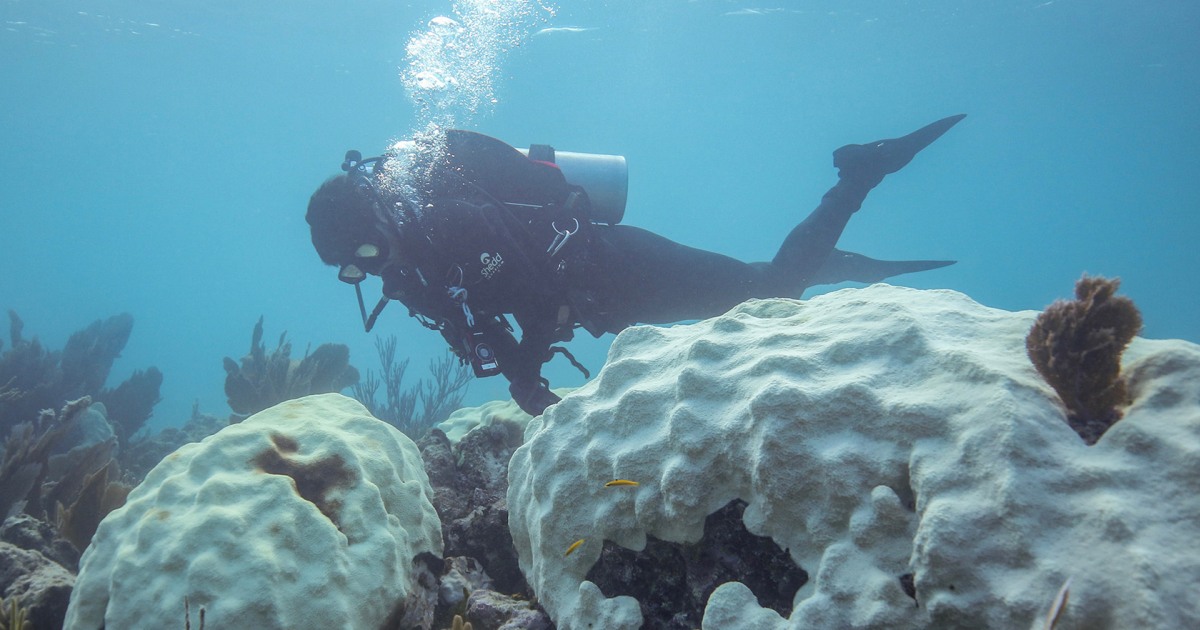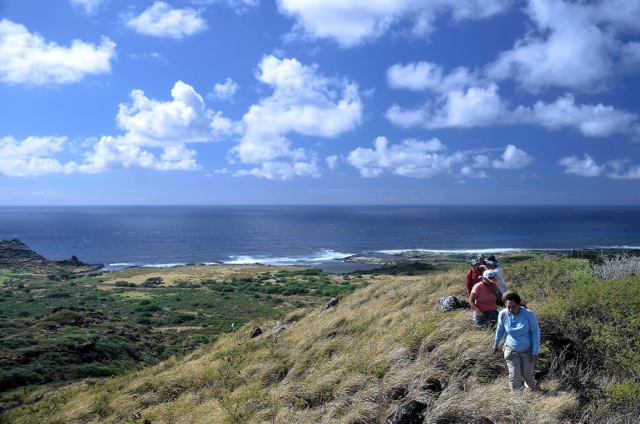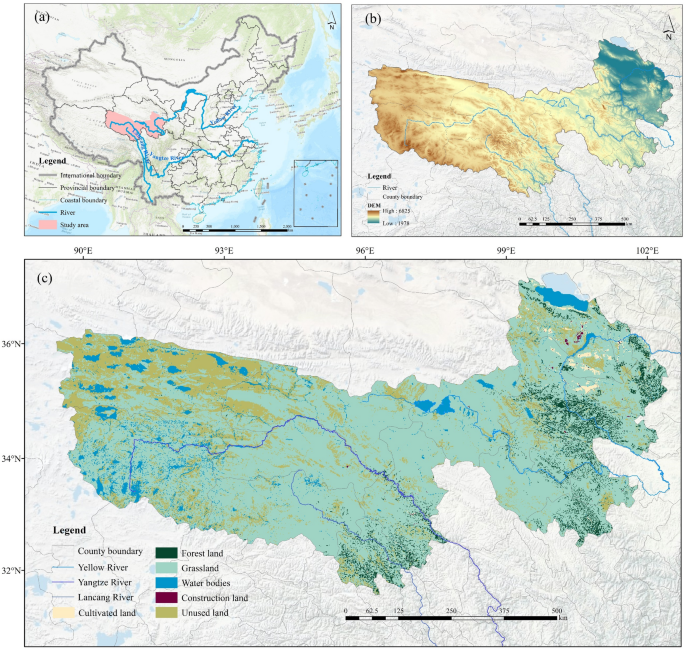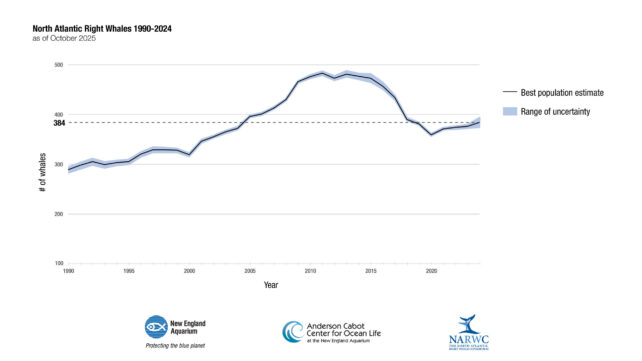Report on Coral Reef Degradation and Implications for Sustainable Development Goals
Ecological Impact and Setbacks to SDG 14: Life Below Water
Recent marine heat waves have caused a catastrophic loss of elkhorn and staghorn corals in Florida and the Caribbean, representing a significant setback for the achievement of Sustainable Development Goal 14 (Life Below Water). The degradation of these vital marine ecosystems undermines efforts to conserve and sustainably use the oceans, seas, and marine resources.
- Loss of Keystone Species: Elkhorn and staghorn corals are unique Atlantic species noted for forming extensive, three-dimensional lattice structures that provide critical habitats for a wide range of marine life. Their widespread mortality directly impacts marine biodiversity.
- Geographic Scale of Destruction: The 2023 heat wave decimated coral populations across the Caribbean. In southern Puerto Rico, nearly all elkhorn coral was lost, and subsequent 2024 heat waves destroyed more resilient colonies in the north.
- Failure of Restoration Efforts: Decades of restoration projects in Florida, which had successfully increased coral coverage by approximately 400% over four years, were completely erased by the 2023 heat wave.
Climate Change as a Primary Driver: The Imperative of SDG 13: Climate Action
The mass mortality event is a direct consequence of extreme ocean temperatures, highlighting the urgent need for global progress on SDG 13 (Climate Action). The failure to mitigate climate change poses an existential threat to sensitive marine ecosystems like coral reefs.
- Natural Recovery Hindered: Researchers report little hope for natural recovery in the Florida reef tract. Surviving coral pockets to the north are unable to repopulate southern areas, as ocean currents prevent the necessary dispersal of eggs and sperm.
- Systemic Vulnerability: The event demonstrates the vulnerability of even restored ecosystems to climate-related shocks, emphasizing that conservation efforts cannot succeed without parallel, aggressive action on climate change.
Innovative Conservation Strategies and Partnerships for the Goals (SDG 9 & SDG 17)
In response to the crisis, the scientific community is pursuing innovative solutions and forming critical partnerships, aligning with SDG 9 (Industry, Innovation, and Infrastructure) and SDG 17 (Partnerships for the Goals).
- Genetic Preservation and Biobanking: Organizations like ISER Caribe are focused on “biobanking coral species” by collecting living fragments. This strategy aims to preserve genetic diversity for future restoration when conditions may be more favorable.
- Assisted Evolution and Migration: A proposed path forward involves importing heat-tolerant corals from outside the region to rebuild the reefs with more resilient species.
- Exploration of Gene-Editing Technology:
- Scientists are considering gene-editing as a potential long-term tool to enhance the heat resistance of corals.
- This advanced biotechnological approach, while requiring further research and bioethical consideration, is under exploration. The International Union for Conservation of Nature (IUCN) recently approved further investigation into using such tools for wildlife conservation, indicating a global collaborative effort to address biodiversity loss.
Analysis of Sustainable Development Goals in the Article
1. Which SDGs are addressed or connected to the issues highlighted in the article?
-
SDG 13: Climate Action
The article directly links the destruction of coral reefs to climate-related phenomena. It repeatedly mentions the “2023 heat wave” and subsequent “heat waves in 2024” as the primary cause for the death of elkhorn and staghorn corals in Florida and the Caribbean. This highlights the urgent need to combat climate change and its impacts on vulnerable ecosystems.
-
SDG 14: Life Below Water
This is the most central SDG to the article. The entire text focuses on the health of marine ecosystems, specifically coral reefs. It discusses the loss of marine biodiversity (“killed nearly all of the elkhorn coral”), the degradation of marine habitats (loss of the “3D structure” provided by corals), and the challenges of marine conservation and restoration (“erased decades of restoration projects”).
-
SDG 15: Life on Land
Although the focus is on marine life, SDG 15 is relevant through its emphasis on halting biodiversity loss and protecting threatened species. The article centers on the plight of “elkhorn and staghorn corals,” which are threatened species. The discussion about their widespread death and potential solutions like “biobanking” directly relates to the goal of preventing the extinction of threatened species.
-
SDG 9: Industry, Innovation and Infrastructure
The article touches upon the role of scientific research and technological innovation as potential solutions to the crisis. It mentions advanced scientific strategies such as “biobanking coral species,” importing “heat-tolerant corals,” and exploring “editing corals’ genes to make them more heat resistant.” This connects to the goal of enhancing scientific research and technological capabilities.
2. What specific targets under those SDGs can be identified based on the article’s content?
-
Target 13.1: Strengthen resilience and adaptive capacity to climate-related hazards and natural disasters in all countries.
The article illustrates a critical failure in the resilience of coral ecosystems to climate-related hazards, specifically the “extreme temperatures” of the 2023 and 2024 heat waves. The proposed solutions, such as gene-editing to create “more heat resistant” corals, are attempts to build this adaptive capacity.
-
Target 14.2: By 2020, sustainably manage and protect marine and coastal ecosystems to avoid significant adverse impacts, including by strengthening their resilience, and take action for their restoration in order to achieve healthy and productive oceans.
The article is a case study of the failure to protect a key marine ecosystem. It explicitly states that the heat wave “erased decades of restoration projects for elkhorn and staghorn corals,” demonstrating a significant adverse impact and a setback for restoration actions.
-
Target 14.a: Increase scientific knowledge, develop research capacity and transfer marine technology… in order to improve ocean health.
The article highlights the importance of scientific knowledge. It is based on a “study” and quotes researchers and scientific directors. Furthermore, it points to the need for developing research capacity by discussing future scientific interventions like “biobanking” and “gene-editing tools,” which require more research and scrutiny.
-
Target 15.5: Take urgent and significant action to reduce the degradation of natural habitats, halt the loss of biodiversity and, by 2020, protect and prevent the extinction of threatened species.
The mass death of elkhorn and staghorn corals described in the article is a direct example of biodiversity loss and the degradation of a natural habitat. The efforts by organizations like ISER Caribe to collect “living fragments” for “biobanking” are urgent actions aimed at preventing the local extinction of these species.
-
Target 9.5: Enhance scientific research, upgrade the technological capabilities of industrial sectors in all countries… encouraging innovation.
The discussion around potential future solutions like “gene-editing tools” directly aligns with this target. The article notes that the International Union for Conservation of Nature has approved “further exploration” of these tools, signifying an effort to enhance scientific research and leverage innovation for conservation.
3. Are there any indicators mentioned or implied in the article that can be used to measure progress towards the identified targets?
- Coral Coverage: The article explicitly mentions this as a metric for restoration success. It states that intensive work had “increased coral coverage by about four times” before being wiped out. This percentage or area of coverage is a direct indicator for Target 14.2 (health of marine ecosystems).
- Species Survival/Mortality Rate: The article implies this indicator by stating that extreme temperatures “killed nearly all of the elkhorn coral in southern Puerto Rico.” Tracking the survival or mortality rate of these threatened species is a key indicator for Target 15.5 (protecting threatened species).
- Number of Biobanked Species/Fragments: The work of ISER Caribe, which is “focused on ‘biobanking coral species,’ by collecting living fragments,” implies an indicator. The number of species or genetic samples successfully preserved in biobanks can measure progress in ex-situ conservation efforts under Target 15.5.
- Investment in and Exploration of New Technologies: The mention of gene-editing as an idea that would “require more research and scrutiny” and is now “on the table” implies that the level of research, funding, and policy discussion dedicated to such innovative conservation technologies can serve as an indicator for Targets 14.a and 9.5.
4. SDGs, Targets, and Indicators Summary Table
| SDGs | Targets | Indicators |
|---|---|---|
| SDG 13: Climate Action | 13.1: Strengthen resilience and adaptive capacity to climate-related hazards. | Resilience of coral species to heat waves (currently low, with efforts to increase it via gene-editing). |
| SDG 14: Life Below Water | 14.2: Manage and protect marine and coastal ecosystems and take action for their restoration. | Percentage of coral coverage (mentioned as having increased four times before being erased). |
| 14.a: Increase scientific knowledge and develop research capacity. | Number of scientific studies and development of new conservation technologies (e.g., biobanking, gene-editing). | |
| SDG 15: Life on Land | 15.5: Halt the loss of biodiversity and prevent the extinction of threatened species. | Species survival/mortality rate (e.g., “killed nearly all of the elkhorn coral”). Number of living fragments collected for biobanking. |
| SDG 9: Industry, Innovation and Infrastructure | 9.5: Enhance scientific research and encourage innovation. | Exploration and research into innovative tools (e.g., “further exploration of whether gene-editing tools can be used”). |
Source: nbcnews.com






